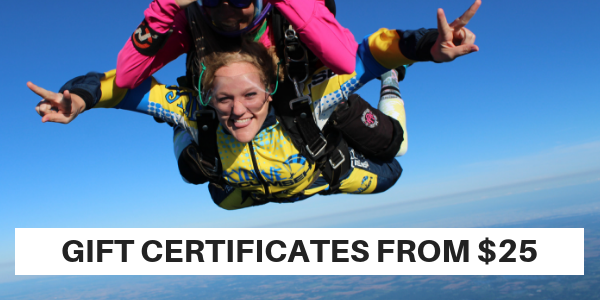- Michigan's Premier Skydiving Center
- Call Now: (517) 423-7720

What Are Safety And Training Advisors (S&TAs)?
Thursday, September 28, 2017
- Skydive Tecumseh
- 9/28/17
- 0
- General
When you’re on a dropzone, you’ll probably hear a lot of acronyms. Skydiving’s military heritage sings out in the number of acronyms we regularly use in our daily dropzone lives, after all. We graduate from “AFF;” we turn on our “AAD;” we gossip about the “DZO;” we have memberships in the “USPA;” we tap end cells in “CRW;” we link up in “RW”…the list goes on. We could write a book about all these acronyms, but we’ll talk about just one today: “S&TA.” Here’s your primer on what an S&TA is and does.
What does S&TA stand for?
“S&TA” is short for “Safety And Training Advisor.”
Who appoints an S&TA?
These superheroes are appointed by the USPA Regional Directors to keep overwatch at each dropzone.
What does an S&TA do on a dropzone?
Among their full slate of volunteer duties, S&TAs provide advice and training for the skydivers on the DZ. They help to strategize and plan extraordinary jumps (such as night jumps and demo jumps), they verify rating renewal requirements, and they proctor license tests. They offer experienced counsel to skydivers who are unsure of proper procedures. When something bad happens, the S&TA is called upon to investigate the incident and report and safety problems and violations they may find. The S&TA is often the media contact in such instances.
What responsibilities does an S&TA carry?
The S&TA’s number-one responsibility is to promote and uphold safe skydiving. The list of on-the-job duties that an S&TA performs all align with that overarching, umbrella goal. Here’s the list, straight from the USPA website, to give you an idea of what’s expected of your S&TA on any given day:
- Observes skydiving operations to verify compliance with the Basic Safety Requirements
- Informs the Regional Director of all flagrant and/or recurring safety violations
- In grave cases, takes summary action under Section 1-6 of the USPA Governance Manual
- Provides safety and training advice to skydivers, drop zone operators, and rating holders
- Reviews plans for exhibition jumps
- Verifies that drop zones qualify as “sanctioned” by meeting the minimum drop zone requirements (see the BSRs in the Skydiver’s Information Manual)
- Assists and advises with extraordinary skydive operations (see the BSRs and Advanced Progression section in the Skydiver’s Information Manual)
- Investigates accidents and submits reports (submit online)
- Verifies the requirements on D-License applications and rating renewals
- Promotes USPA policies and programs, for example, USPA Safety Day
- Unless excused by the Regional Director, attends an annual S&TA meeting called by the Regional Director
Why would I talk to an S&TA?
If you’re a first-time tandem student, you won’t need to. If you’re a sport skydiver, however, the local S&TA is an important part of your network in the sport. If you have a nagging safety concern (or, honestly, a question about anything related to skydiving), the S&TA at your dropzone is likely the best place to start on your quest for expert answers. If s/he doesn’t know the answer, s/he will certainly know where to send you.
Also notable: your local S&TA serves as your direct link to USPA Headquarters. If you need to go “up the chain,” start there.
Skydive Tecumseh is proud to be a safety-first dropzone with a top-flight S&TA keeping a hawkeye on the operation. Whether or not you’re a sport skydiver (yet), when you book a reservation and come to jump here, you’ll feel it!

Skydiving for the first time at Skydive Tecumseh was by far one of the greatest experiences of my life. No matter how high maintenance I was before the jump when I was scared, every single jumper employee did everything they could to make my experience unforgettable. I have already recommended here for many of my friends wanting to go with me for their first time on my next round!
Christine Kardel
Copyright © 2024, Skydive Tecumseh, All Rights Reserved.
DropZone Web Design & Marketing by Beyond Marketing, LLC